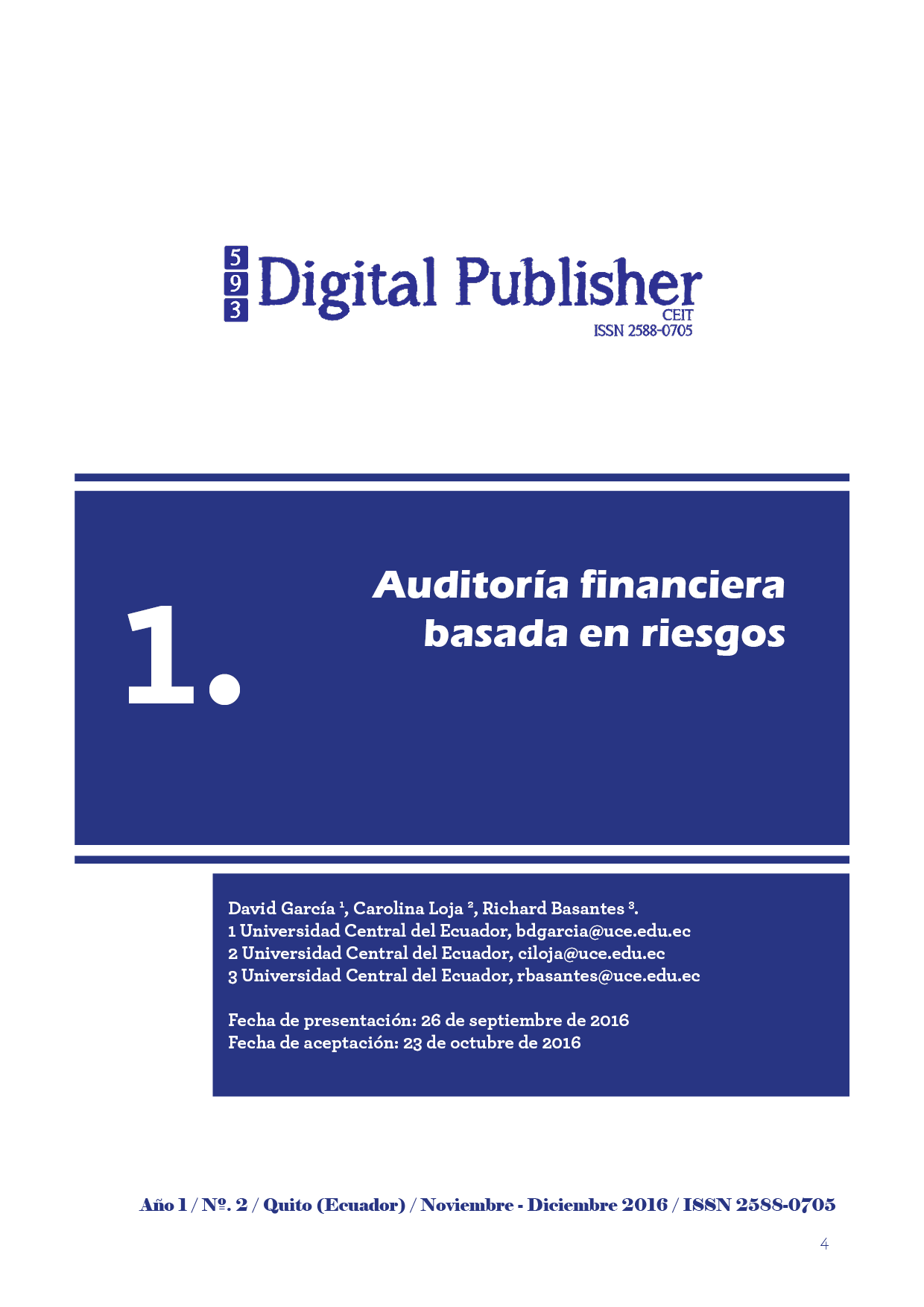Risk-based auditing
Main Article Content
Abstract
What is risk? It is an occurrence, something that can not be predicted, it is a probability that a catastrophic situation will happen or not, or that a person will suffer an accident or damage. In Audit, you can define it as the probability that the financial statements contain an error of such importance, that it is not a good decision for the others, that they generate damages to their users.
The great concern that auditors and control entities have when reviewing an audit or reviewing it is the lack of planning with which it could have been executed, so that it would not have sufficient attention and prevention of relevant risks.
It is said that it is not a simple task to identify, analyze and respond to these risks, and for this it is necessary that the auditor analyze and evaluate the information, and also act on the basis of their judgment and discussion.
One of the main tasks we have to perform is the determination of the materiality which, we must see this task analyzing the different risks, the NIA indicate that when determining the materiality, the auditor should focus and perform his work thinking about the users of the financial information and, in general, the control environment that a company possesses, with respect to the generation and storage of the information with which the financial statements are prepared.
Through the application of the qualitative method, we have concluded that risk-based auditing is applicable both to internal and external auditors, to financial audits and to special audits, since the risk analysis and the risk analysis are currently carried out in the first place. answer to them.
Downloads
Article Details
1. Derechos de autor
Las obras que se publican en 593 Digital Publisher CEIT están sujetas a los siguientes términos:
1.1. 593 Digital Publisher CEIT, conserva los derechos patrimoniales (copyright) de las obras publicadas, favorece y permite la reutilización de las mismas bajo la licencia Licencia Creative Commons 4.0 de Reconocimiento-NoComercial-CompartirIgual 4.0, por lo cual se pueden copiar, usar, difundir, transmitir y exponer públicamente, siempre que:
1.1.a. Se cite la autoría y fuente original de su publicación (revista, editorial, URL).
1.1.b. No se usen para fines comerciales u onerosos.
1.1.c. Se mencione la existencia y especificaciones de esta licencia de uso.
References
Contraloría General del Estado (2012), Manual de Auditoría Financiera.
Norma Internacional de Auditoría 250. (2009). Consideración de leyes y regulaciones en una auditoría de Estados Financieros.
Maldonado M, Subia J, Mantilla D, Becerra E. (2017). Auditoría Integral, Mengraf – Quito.
Mantilla S, Bell T. (2008). Auditoria basada en riesgos- Quito.
Estupiñan G, Niebel B. (2015).Administración de riesgos E.R.M. y la Auditoria Interna- Bogota.
Norma Internacional de Auditoría 315. (2009). Responsabilidad del auditor para identificar y valorar

